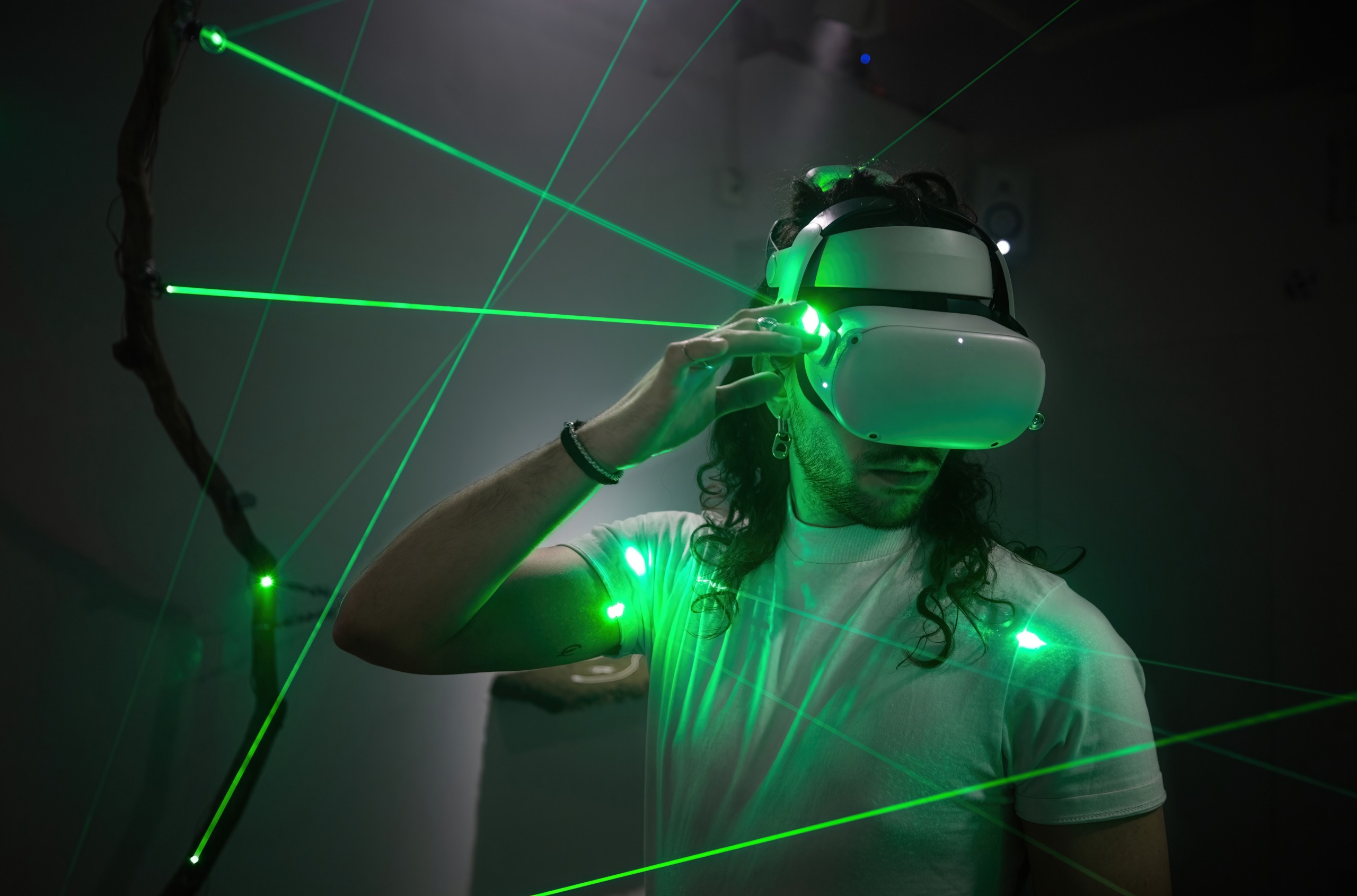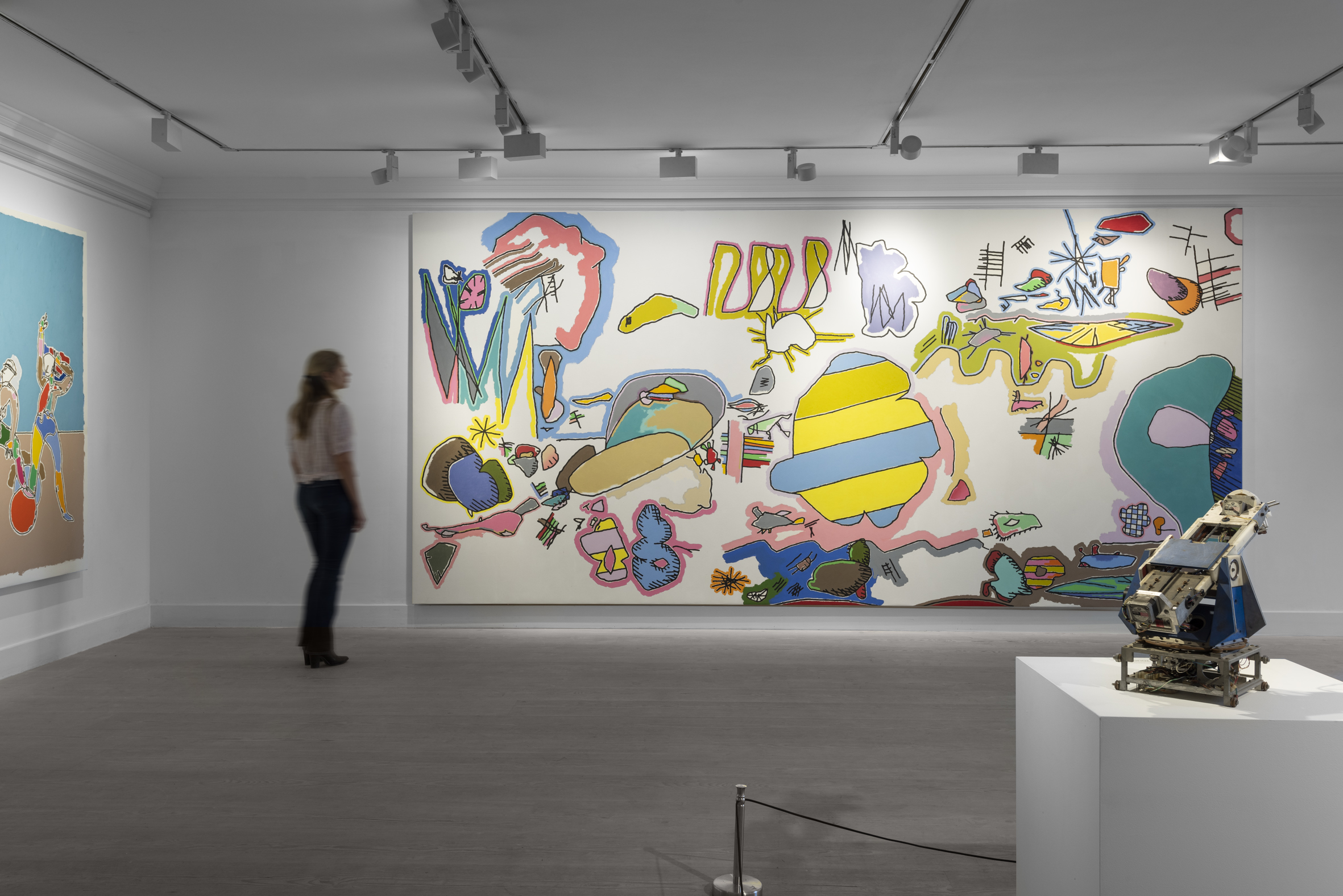
IN THE ALGORITHM’S EYE
How London is emerging as a global capital for digital art — and what that means for collectors
March this year saw Christie’s complete arguably the most controversial sale in its 259-year history. Entirely conducted online, Augmented Intelligence was the first AI- dedicated sale by a major auctioneer and featured 20 works by artists including Refik Anadol and the late AI pioneer Harold Cohen. It caused an outcry not seen since the Zarya case, when a federal court dismissed a lawsuit that questioned the ownership rules around an NFT called ‘Quantum’, which Sotheby’s sold for $1.47 million in 2021.
A letter calling for the Christie’s auction to be scrapped garnered more than 6,500 signatures, with artists claiming that the technology behind the works amounted to “mass theft” because it is trained on human creativity without consent. And yet the sale not only went ahead, it amassed $728,784 across 20 lots (outpacing the house’s projected $600,000) and seduced a new subset of millennial and Gen Z collectors, 37% of whom were first-time Christie’s customers.
Digital art, a broad term that covers work that creatively and critically engages with digital technologies and is often presented on digital platforms, has always been something of an outsider medium. However, during the past five years, as interest in NFTs and AI has boomed and the COVID-19 pandemic encouraged a mass migration online, it has made its way into wider public view.
“London is a global hub where art, technology, and academic research intersect,” says Pegah Hoghoughi of Gazelli Art House, a commercial gallery on Dover Street that provides an important platform for digital artists. “With its mix of collectors, curators, and creative technologists, the city’s ecosystem fosters the kind of experimentation that digital art thrives on. It’s also home to several leading art and design schools, which ensures a steady wave of emerging talent.” Gazelli Art House’s online residency and NFT marketplace, GAZELL.iO, has provided an important bridge between ultra- contemporary and more established names such as Harold Cohen since it launched in 2015.
LONDON’S DIGITAL EMERGENCE

AT GAZELLI ART HOUSE
“At the time, the gallery was encountering an increasing number of artists working at the intersection of art and technology, many of whom lacked access to traditional exhibition spaces or formal representation,” says Hoghoughi, who oversees the programme. Another key factor has been the increasing cross-pollination between big tech and the art world. In the past 25 years, London has quietly become a global nexus for creativity and technology. A standout moment came in 2011 with the launch of Google’s Arts & Culture programme, which began unlocking the power of high-resolution scans of artworks and later expanded into its own Arts & Culture Lab under Freya Salway.
“London has quietly become a global nexus for creativity and technology”
Despite initial unease, key institutions including the Serpentine and Barbican have plugged into the digital current. Last autumn, Tate Modern’s show, Electric Dreams: Art and Technology Before the Internet, traced digital’s history from the 1950s to the present through work from more than 70 artists, while the V&A’s first Digital Art Season included exhibitions, commissions, workshops, and screenings.
The city’s many fairs and festivals have followed suit. The 2024 edition of Frieze London included Lawrence Lek’s Artist Award commission, Guanyin: Confessions of a Former Carebot, as well as John Akomfrah’s five-channel video work ‘Becoming Wind’, which explored the relationship between nature and technology. This summer, Peckham Digital returned for its third edition, while SXSW London debuted its visual arts programme alongside its core tech and music offerings.

AT GAZELLI ART HOUSE
THE CHALLENGES OF DIGITAL ART
Although digital art may feel particularly pertinent today, it has been quietly emerging for decades. Digital Art: 1960s–Now (Thames & Hudson International, 2024), co-written and edited by the digital curatorial team of the V&A, Melanie Lenz, Corinna Gardner, and Pita Arreola, traces its history from early computer algorithm experiments to today’s interactive installations, virtual reality, mixed reality (MR), and blockchain-based art. Although the V&A first acquired computer-generated art in 1969, it wasn’t until the late 2000s that its digital collection was enhanced with the acquisition of some 250 works. Melanie Lenz, the V&A’s curator of digital art, believes that the medium has often been sidelined because it “challenges fundamental assumptions
about authorship, authenticity, creativity, and the role of human agency in art-making.” She cites the increasing number of works that involve corporate software components needed to keep elements of a piece functional as a major challenge for collectors and museums alike, because “these can present potential copyright concerns”.
Another issue is preservation. “Rapid tech-nological change can render tools and formats obsolete,” she adds. “Maintaining the interactivity, appearance, and contextual relevance of digital artworks requires innovative and adaptive preservation strategies.”
COLLECTING BEYOND THE FRAME
Digital art’s relationship with the commercial market is evolving. The NFT frenzy of 2021–22 saw rapid speculation give way to a sharp collapse. What remains is a leaner, more meaningful market with the potential for real longevity. Pioneering galleries such as Hackney Wick’s ArtSect and more established names such as The Mayor Gallery, in Mayfair, have been instrumental in shaping this next chapter, bridging early innovators in digital media with a new generation of collectors.
According to Hoghoughi, the rules for collecting digital art may not be as different from other mediums as they first appear. “Understanding the artist’s intent and process is key. Don’t be afraid to ask questions about format, storage, or display but most importantly, collect with curiosity. Digital art is about experience as much as ownership, and technology should enhance that connection rather than complicate it.”
A MARKET IN MOTION
While it may not be to the taste of the 6,500 signatories of the letter to Christie’s, it seems that the dispersed, cross-institutional diversity of London’s digital art ecosystem has become its superpower. And unlike other areas of the market, it shows no sign of stalling.
As Lenz says: “Artists who use technological tools both as a medium and as a mode of meaningful engagement with digital culture are in constant flux – and this is what makes it such an exciting area.”
